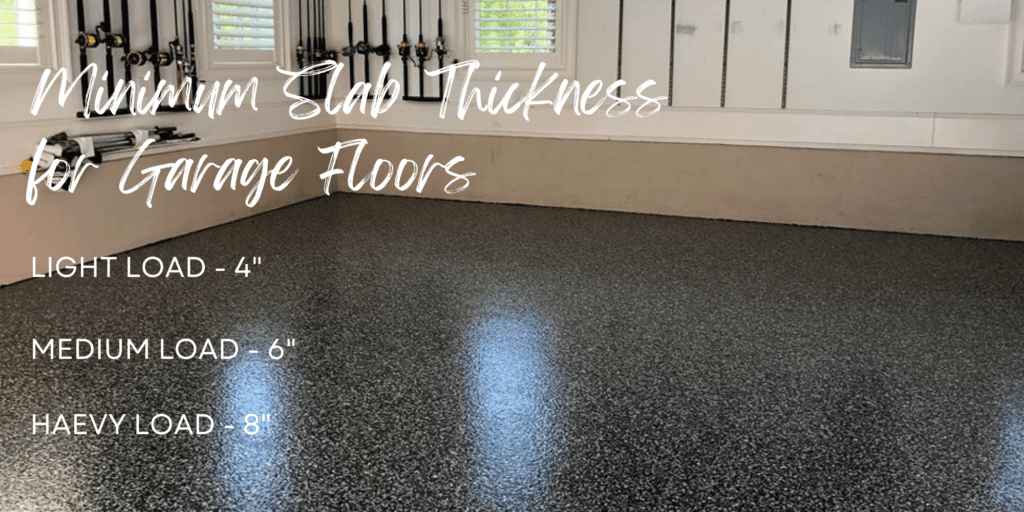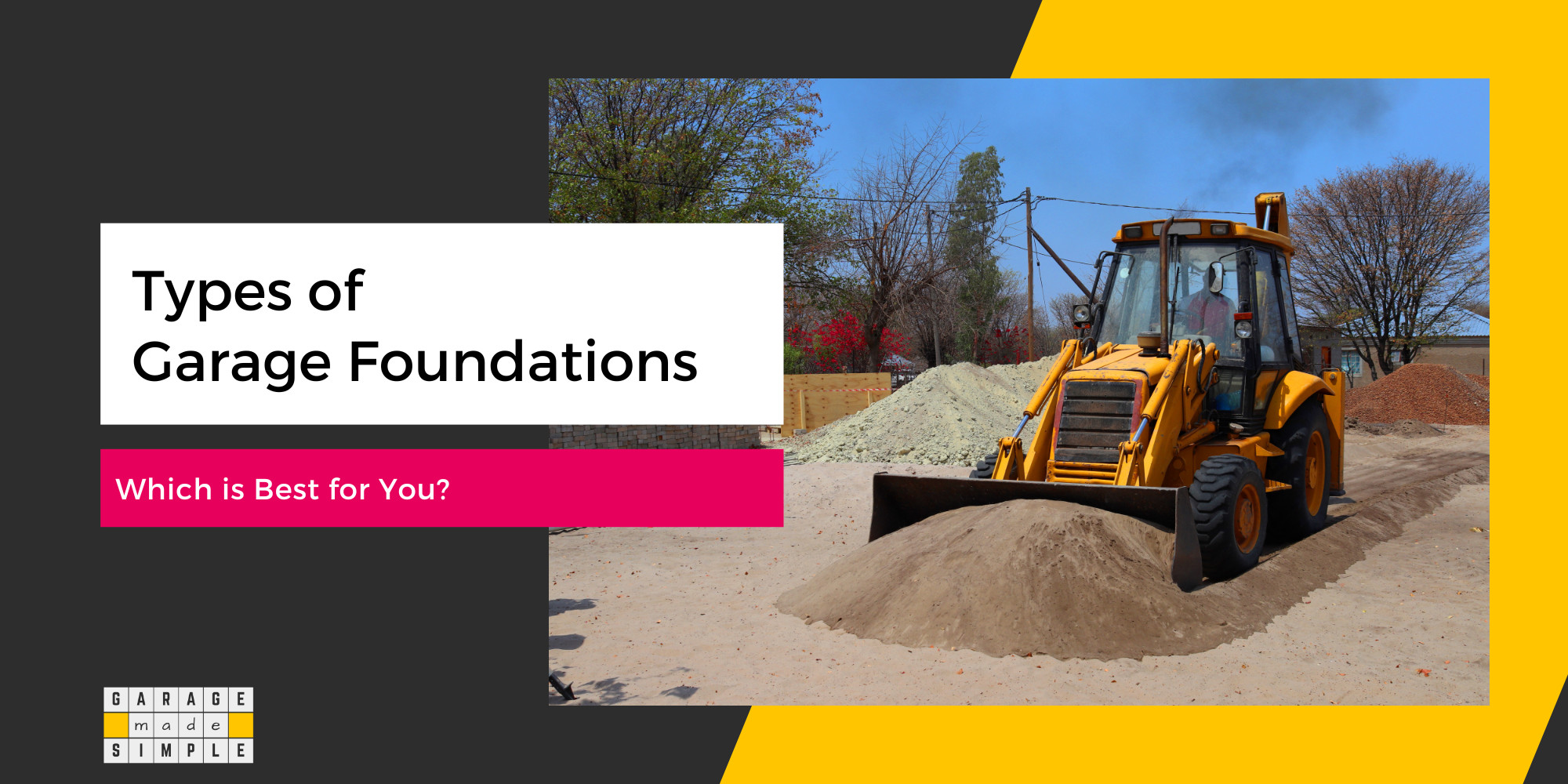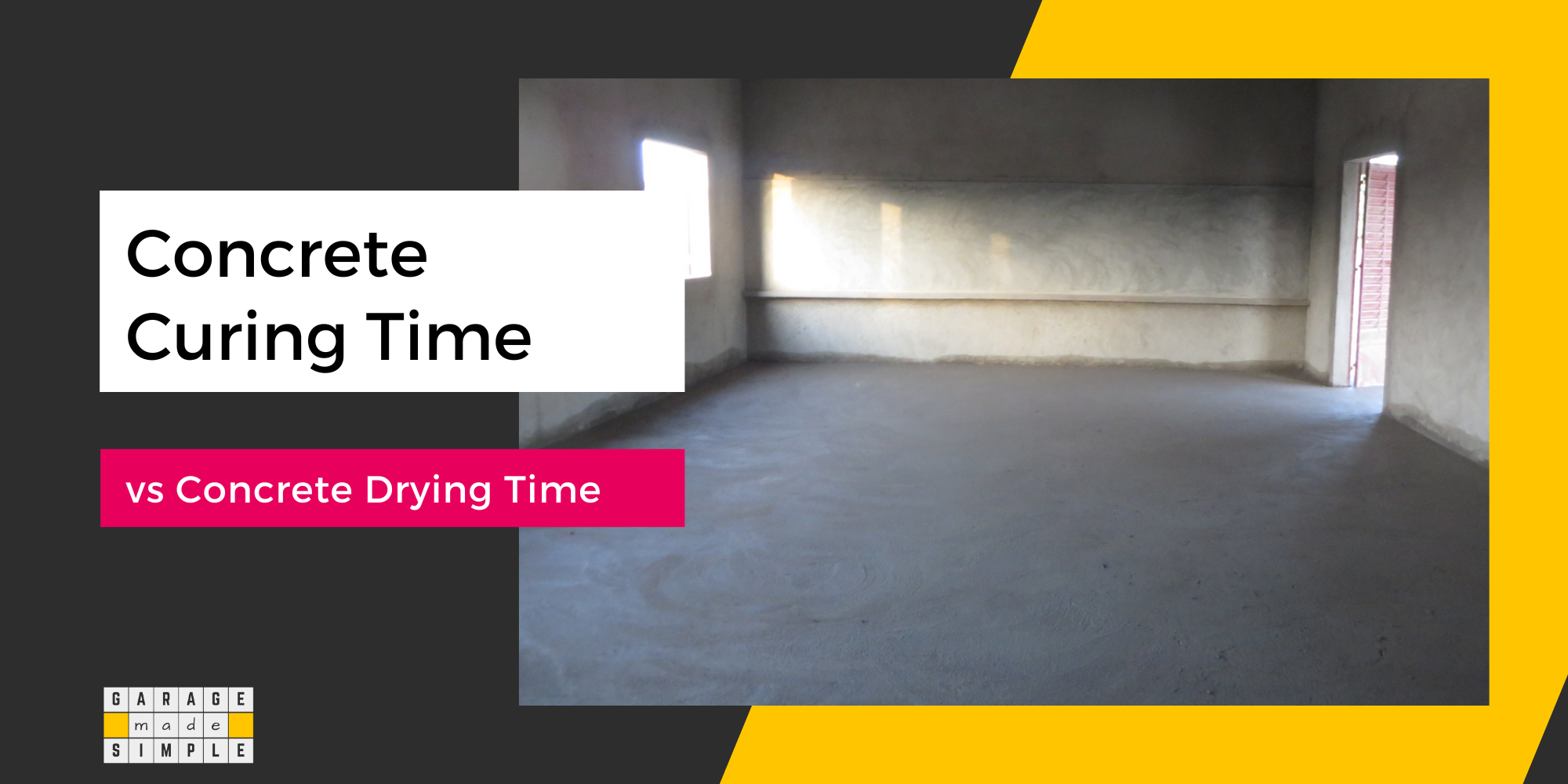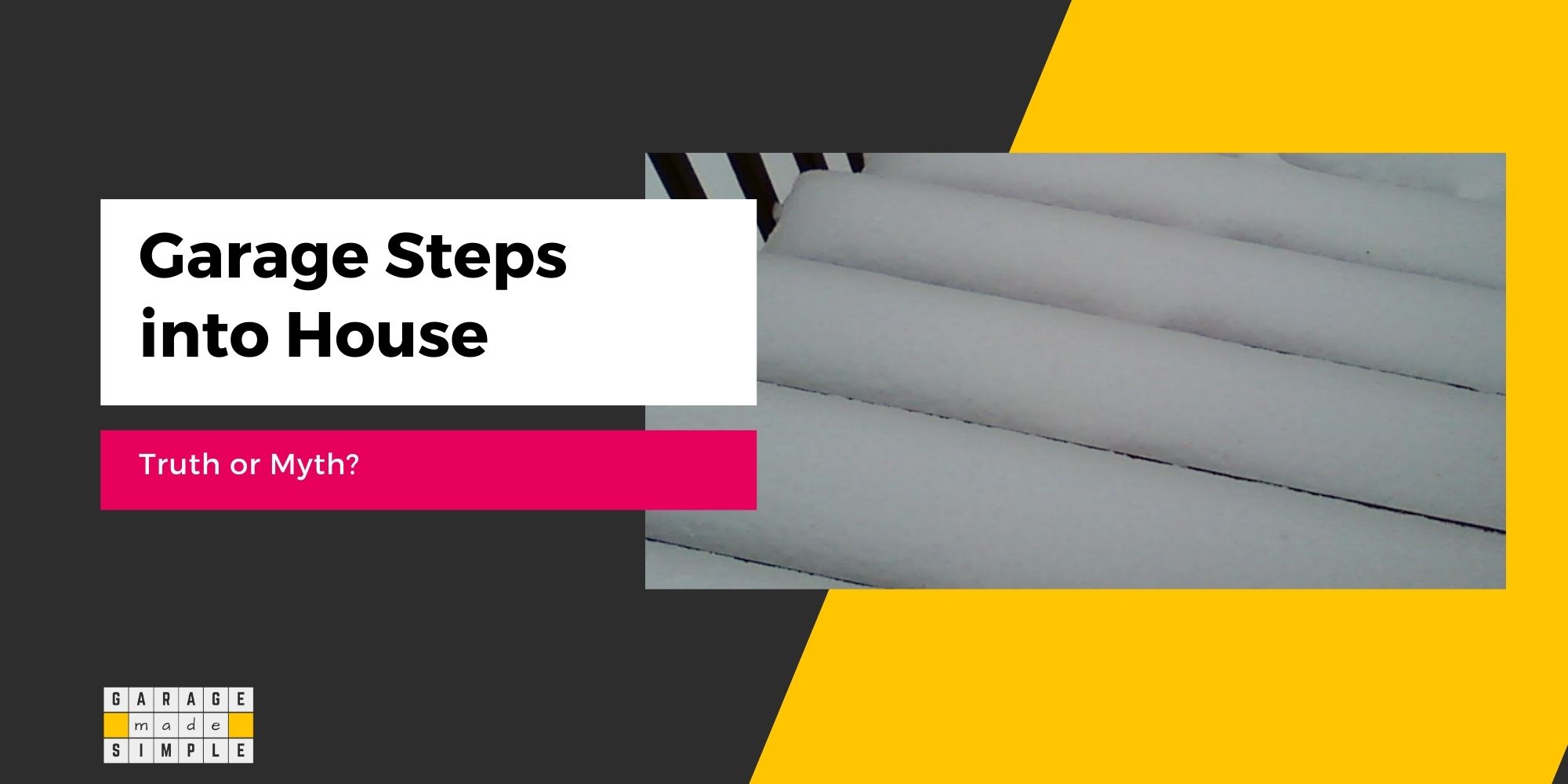Minimum Slab Thickness for Garage & 8 Essentials for Concrete Strength
As an Amazon Associate, I earn from qualifying purchases.
What Is the Minimum Slab Thickness for Garage Floor?
The minimum slab thickness for the garage floor depends primarily on the expected load. The concrete thickness for the garage should be at the very least 4″ for light loads, 6″ for medium loads, and 8″ for heavy loads.
| Load Type | Minimum Slab Thickness |
|---|---|
| Light Loads | 4 inches |
| Medium Loads | 6 inches |
| Heavy Loads | 8 inches |
NOTE: Section 1907.1 of the 2021 International Building Code (IBC) specifies that the thickness of concrete floor slabs supported directly on the ground shall not be less than 3 1/2″.
However, this is the absolute minimum and applies only when there is little or no load on the concrete slab. Naturally, this is not applicable when it comes to minimum slab thickness for garage floors, as they must be load-bearing.

What are Typical Load Levels on a Garage Floor?
The load levels on a residential garage floor are typically classified as:
- Light Loads: 1 – 2 light-duty cars, SUVs or trucks.
- Medium Loads: 1 – 2 medium duty SUV’s or trucks.
- Heavy Loads: 1 – 2 heavy duty SUV’s or trucks.
Here are some examples of cars and trucks typically used by US families by weight classification:
Light Duty (GVWR < 8,500 lb)
- Cars: Honda Accord, Toyota Camry, Nissan Altima, Hyundai Sonata, Kia K5
- SUVs: Honda CR-V, Toyota RAV4, Nissan Rogue, Hyundai Tucson, Kia Sportage
- Pickup trucks: Toyota Tacoma, Nissan Frontier, Chevrolet Colorado, GMC Canyon
Medium Duty (GVWR 8,501-10,000 lb)
- SUVs: Chevrolet Traverse, Buick Enclave, GMC Acadia, Ford Explorer, Lincoln Aviator
- Pickup trucks: Ford F-150, Chevrolet Silverado 1500, Ram 1500, GMC Sierra 1500, Toyota Tundra
Heavy Duty (GVWR > 10,000 lb)
- SUVs: Chevrolet Suburban, GMC Yukon, Ford Expedition, Lincoln Navigator
- Pickup trucks: Ford F-250, Chevrolet Silverado 2500HD, Ram 2500, GMC Sierra 2500HD, Ford F-350, Chevrolet Silverado 3500HD, Ram 3500, GMC Sierra 3500HD
Therefore, in reality, while the minimum slab thickness for garage floors can be 4″, the most common slab thickness for garage floors is typically 6″.
Key Factors That Affect Concrete Slab Strength

The garage floor thickness is, of course, important for determining strength & durability. But it is not the only factor. 8 other key factors that affect concrete slab strength are:
- Soil Support System (Base)
- Vapor Barrier (Between Base & Concrete)
- Concrete Strength (psi)
- Concrete Admixtures
- Reinforcement of Concrete
- Compaction of Concrete
- Control & Expansion Joints
- Concrete Curing Conditions
1. “Soil Support System” for “Slab-on-Grade” Foundations
Most concrete garage floors are “slab on grade”. A slab on grade rests on the “soil support system” below it and is therefore self-supporting.
The soil support system consists of three layers:
| Subgrade | This is the existing soil, but may have been enhanced by adding fresh soil. The soil layer is compacted. |
| Sub Base | Sub-base is several layers of aggregates on top of the subgrade. The aggregate must be irregular in shape and of different sizes. The bigger aggregates go at the bottom and the smaller aggregates stay at the top. The sub-base is compacted at each stage. |
| Base | The base consists of layers of gravel and sand over the sub-base. This is smoothed out & compacted. |
The load-bearing capacity of the slab-on-grade depends on the quality of the soil support system. A slab-on-grade foundation helps to
- Distribute the load evenly over a large area
- Drain groundwater quickly
- Prevent localized soil subsidence
The minimum slab thickness for a garage is a function of how well the base has been prepared.
Proper sub-base selection and preparation can prevent common issues like settling, shifting, or moisture seepage. The right sub-base material improves drainage, promotes slab stability, and extends the lifespan of the garage floor.
A well-prepared sub-base typically includes a compacted layer of crushed stone or gravel, which acts as a foundation that withstands load, temperature fluctuations, and ground moisture changes.
Here’s an in-depth look at the common types of gravel used for sub-bases, and how to choose the right one based on climate and region.
Common Types of Gravel for Sub-Bases
- Crushed Stone #57
- Description: This gravel type consists of stones about ¾ inch in size. It’s a versatile option commonly used in concrete sub-bases.
- Pros: It offers excellent drainage and compacts well, making it ideal for residential garage floors. Its larger size also helps prevent the sub-base from washing away in wet conditions.
- Cons: Crushed Stone #57 can be rough to work with and might require additional compaction.
- Recommended Application: It is ideal for areas where drainage could be an issue, such as in regions with heavy rainfall.
- Granular A Gravel
- Description: This material is a mix of crushed stone and sand. The texture is smoother than Crushed Stone #57.
- Pros: Granular A is easy to compact, offers solid support, and can be used in various climates. Its fine sand content adds extra stability.
- Cons: Due to its finer composition, it may require proper drainage management to prevent water pooling.
- Recommended Application: It is best suited for moderate climates with low rainfall. It is ideal where both stability and a smooth finish are desired.
- Recycled Concrete Aggregate (RCA)
- Description: Made from crushed recycled concrete, RCA is an eco-friendly option, that’s gaining popularity.
- Pros: Environmentally friendly and cost-effective. RCA compacts well and provides a sturdy sub-base.
- Cons: RCA may have inconsistent particle sizes and quality, depending on its source, which can affect compaction.
- Recommended Application: It works well in dry regions and in projects where sustainability is a priority. It will need additional compaction in wet climates.
Sub-Base Material Choice by Zones in the U.S.
Different sub-base materials perform better under specific environmental conditions:
- Wet and Rainy Regions (e.g., Pacific Northwest)
In regions prone to heavy rain, such as Washington and Oregon, using a highly drainable material like Crushed Stone #57 is helpful. This material minimizes water retention and prevents slab movement or cracking. - Cold and Frost-Prone Areas (e.g., Midwest, Northeast)
In colder regions, frost heave can cause the ground to expand and contract, impacting slab stability. Granular A Gravel is ideal here, as it compacts tightly and prevents frost penetration. A thicker sub-base may be necessary to provide extra protection. - Dry and Arid Zones (e.g., Southwest)
Recycled Concrete Aggregate (RCA) is a cost-effective and sustainable choice for desert climates with minimal rainfall, such as Nevada or Arizona. RCA’s compaction properties work well in dry soils, providing a stable base without the risk of moisture retention issues.
2. The Importance of a Vapor Barrier for Garage Floor Slabs
The strength & durability of a concrete slab can be seriously compromised by water vapor movement across it. It can result in
- Coating delamination & failures
- Efflorescence & discoloration
- Corrosion of rebars
- Damaged aggregates
- Slab curling at edges
The ground below the garage concrete floor will have moisture in most climatic zones and soil conditions. The vapor pressure will push the moisture through the concrete slab.
A vapor barrier is a cheap way to block it. But, it must be done after base preparation and before pouring the concrete mix. It can not be done later.
If you put it in you have nothing to worry about. If you do not, you may live to regret your decision.
3. The Best Concrete Mix for Garage Floors
The best concrete mix for the garage floor must have the correct concrete strength. Table R402.2 of 2021 International Residential Code (IRC) specifies “Minimum Specified Compressive Strength” for garage floor slabs as:
| Weathering Potential | Compressive Strength (PSI) |
| Negligible | 2500 |
| Moderate | 3000 |
| Severe | 3500 |
While the above is the minimum standard that must be followed, practically concrete strength requirements are higher based on the vehicle weight capacity and the concrete slab thickness for the garage.
| Vehicle Weight Capacity | Ideal Garage Floor Thickness (inches) | Recommended Concrete Strength (psi) |
|---|---|---|
| Light Duty (GVWR < 8,500 lb) | 4 inches | 3,000 – 3,500 psi |
| Medium Duty (GVWR 8,501 – 10,000 lb) | 6 inches | 3,500 – 4,000 psi |
| Heavy Duty (GVWR > 10,000 lb) | 8 inches | 4,000 – 5,000 psi |
Explanation of Ideal Thickness and Concrete Strength
- Light Duty: A 4-inch thick concrete slab is sufficient for standard vehicles such as sedans, light SUVs, and smaller trucks.
- Medium Duty: A 6-inch thick concrete slab is ideal for larger SUVs and pickups, for increased support.
- Heavy Duty: An 8-inch thick concrete slab with higher concrete strength ensures durability and load-bearing capacity for heavy-duty trucks and large SUVs.
The water-cement ratio in the concrete mix is an important factor in determining the strength of the concrete slab. Too much water improves workability but reduces strength.
The ideal water-cement ratio is 0.5. This translates to 5.6 gallons of water for every cement bag (94 lbs).
I have covered the various factors associated with the concrete mix in my earlier post The Best Concrete Mix For Garage Floor (6 Important Factors!). Do check it out if you are interested in getting more details.
4. Effect of Admixtures on Concrete Slab Strength
Concrete admixtures are chemicals or ingredients added to the concrete mix during the mixing process. They give special properties to the concrete mix. There are different types of concrete admixtures.
Some concrete admixtures can help reduce the water-cement ratio (by 5-10%) without compromising the plasticity or workability of the concrete mix. The concrete mix retains its slump, despite a lower water-cement ratio.
Other concrete admixtures aid the concrete curing process and increase the rate of concrete slab strength development.
Admixtures have increased both compressive strength and durability of concrete through their water/cement (w/c) reduction, hydrophobic effect, pore reduction/blocking, increased density etc.
The International Journal of Engineering and Science
The result is you can get a higher-strength concrete that is also pliable and workable.
5. Garage Floor Reinforcement Options
Concrete has a very high compressive strength but relatively poor tensile strength. However, it is possible to increase the tensile strength using a reinforced concrete slab. A concrete slab can be reinforced with rebars, welded wire meshes, or fibers.
Reinforcement
provides all the tensile strength where concrete is in tension, as in beams and slabs; it supplements the compressive strength of concrete in columns and walls; and it provides extra shear strength over and above that of concrete in beams.
American Concrete Institute
Types of Reinforcement for Concrete Slabs
Using the right reinforcement in concrete slabs ensures stability, prevents cracking, and enhances the floor’s ability to bear loads, especially in garages.
Here are the primary types of reinforcement commonly used:
- Welded Wire Mesh: a grid of steel wires welded together and laid within the slab before the concrete pour. Welded wire mesh ensures an even load distribution and helps minimize crack propagation. It’s ideal for a residential garage floor with a concrete slab thickness of 4 inches, designed for light vehicle weight capacity.
- Steel Rebar: Steel reinforcing bars, or rebar, are embedded within the slab for added strength. Rebars come in various diameters to match garage floor thicknesses and vehicle load requirements. A concrete slab that is thicker than 5″ must use rebars.
- Fiber Reinforcement: The special fibers are directly incorporated into the concrete mix, which distributes reinforcement throughout the slab. Fiber reinforcement enhances the slab’s resistance to impact and abrasion, making it useful for light-duty applications. It is often used along with the above two types of reinforcement.
- Post-tensioned Concrete: In this method, steel tendons are placed within the slab and tensioned after the concrete sets. This pre-stresses the slab, making it resistant to cracking under heavy loads.
- Post-tensioned concrete is ideal for thick garage slabs supporting heavy-duty vehicles and high concrete strength requirements. This is best for commercial garages, warehouses, and factory floors.
Using the right reinforcement based on slab thickness, concrete strength, and vehicle weight capacity affects the slab’s longevity and performance.
Disclaimer: Steel rebars can not and should not be used if the concrete slab thickness is less than 5”. To find out why, read my earlier blog post Is Rebar For Garage Slab Important? (What You Need To Know!).
Just like the vapor barrier, the reinforcement must be incorporated after base preparation and before pouring the concrete mix. It can not be done later.
6. The Role of Concrete Slab Compaction
Concrete slab compaction removes air voids and packs the concrete particles closer together to increase the slab density before curing begins. This is typically done using vibration, but can also be done manually using tamping tools.
Proper concrete compaction is essential for a strong & durable garage floor. Air voids in concrete make it weak and susceptible to cracking. Compaction removes the air voids and creates a more solid and dense slab.
Compaction also improves the bond between the concrete and any reinforcement, such as steel rebar or welded wire mesh.
Concrete slab compaction results in:
- Increased strength and durability
- Stronger bond between the concrete and reinforcement
- Reduced permeability to water and other liquids
- Reduced risk of cracking and other damage
- Smoother surface finish
- Higher abrasion resistance

7. Why are Expansion and Control Joints Needed?
Placement of Expansion and Control joints in concrete slabs is essential for managing cracks and enhancing durability.
Expansion Joints (Isolation Joints):
Expansion joints, formed before pouring concrete, allow slabs to expand and contract with temperature changes, preventing stress, cracks, and slab failure. They’re placed where new slabs meet existing surfaces like driveways, foundations, or curbs.
Contraction Joints (Control Joints):
Contraction joints are indented or saw-cut to direct shrinkage cracks to specific areas. As concrete cures, water exits, causing shrinkage and cracks. Control joints create a weaker section, guiding cracks to occur at the joint rather than across the slab.
In warm climates, control joints are cut with grooving tools, while the concrete is still wet. Control joints can also be cut with a saw after the concrete has hardened somewhat.
Control joints should be no farther apart than 2 – 3 times (in feet) than the concrete slab thickness (in inches). For example:
| Minimum Slab Thickness for Garage (in inches) | Recommended Gap between Expansion Joints (in feet) |
| 4” | 8’ – 12’ |
| 6” | 12’ – 18’ |
| 8” | 16’ – 24’ |
Check out my article, 3 Types of Construction Joints in Concrete Garage Floors! for more information on expansion and control joints.
8. Ensure Proper Curing for Best Concrete Strength
When concrete is poured, it is a pliable mixture, much like pottery clay. It has no shape or structural strength. Once fully and correctly cured, concrete becomes rock solid with immense strength & durability.
The concrete curing process is typically
| Time After Pour | Status |
| 1 – 2 days | Forms can be removed. Light foot traffic is OK. |
| 7 days | Partial curing. Vehicular & equipment traffic is OK. |
| 28 days | Full curing. |
The curing process promotes the formation of a crystalline matrix within the concrete mix. The crystals form due to a reaction between water and cement known as hydration. Curing helps by
- Retaining moisture as concrete gains strength
- Delaying shrinkage till the concrete can resist shrinkage cracks
- Giving concrete strength, durability, water tightness & wear resistance
The rate of water evaporation from the freshly poured concrete slab determines the ultimate strength developed. The rate of water evaporation depends on
- Water-cement ratio
- Concrete mix & ambient temperature
- Local humidity level
For more details, check out my article Why is Concrete Curing Process Important for a New Garage Slab?
How Thick Should a Concrete Slab Be for a Car Lift?
The short answer is 6″. The reason you need a minimum slab thickness of 6 inches is because the load of the lift and the car on it gets transferred through just the 4 posts of the lift.
I have covered this topic in detail in my article, Minimum Concrete Thickness for 4 Post Lift: What Is Best Practice?
Bottom Line
The ideal garage floor thickness and the concrete strength requirements depend on the weight of the items that you intend to keep in your garage. This includes cars, workshop equipment, the car lift, storage racks, etc.
However, the main difference in the load capacity requirement comes from the weight of vehicles.
Following is a quick guideline on minimum slab thickness for a garage based on vehicle weight:
| Vehicle Type | Number of Vehicles | Weight (lbs each) |
Minimum Slab Thickness | Concrete Strength | Reinforcement |
|---|---|---|---|---|---|
| Light Vehicles | 2 | Less than 8,500 | 4 inches | 3000 – 3500 psi | Wire mesh or fiber reinforcement |
| Medium Vehicles | 2 | 8,500-10,000 | 6 inches | 3500 – 4000 psi | Rebar reinforcement |
| Heavy Vehicles | 2 | More than 10,000 | 8 inches | 4000 – 5000 psi | Rebar reinforcement |
Thank you very much for reading the post. I do hope you found it informative and useful.









